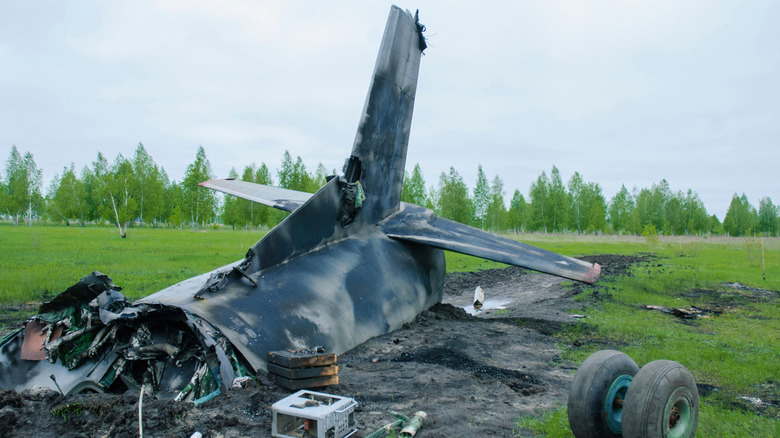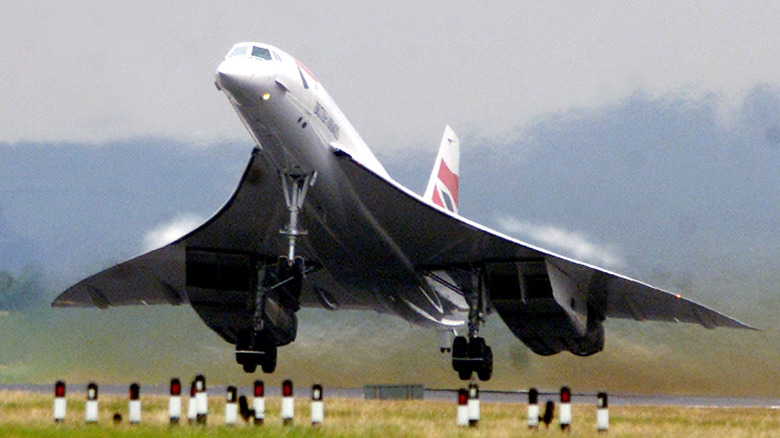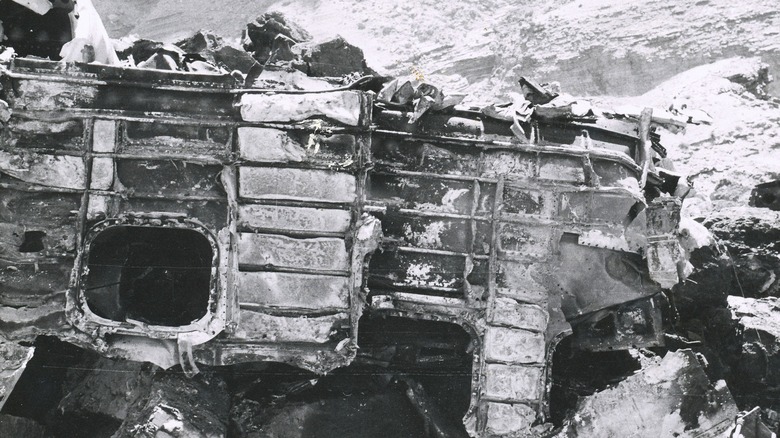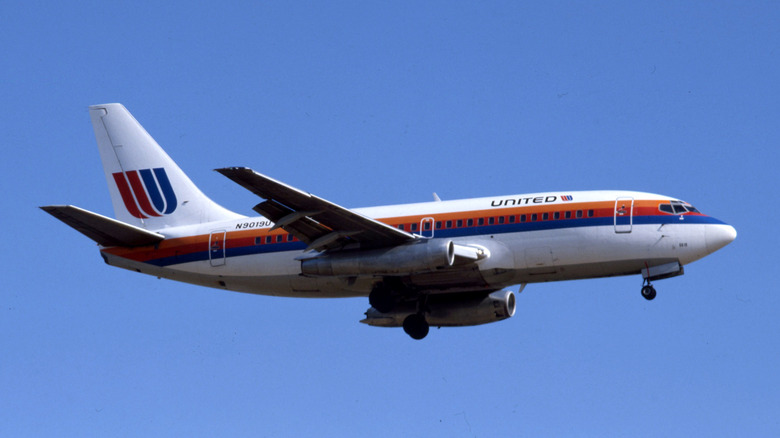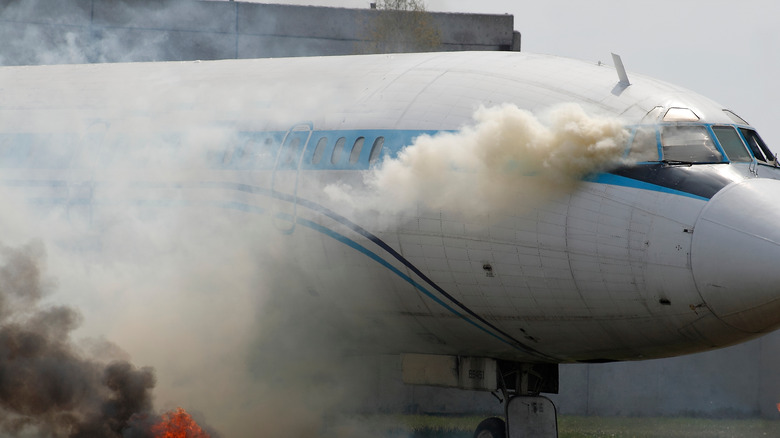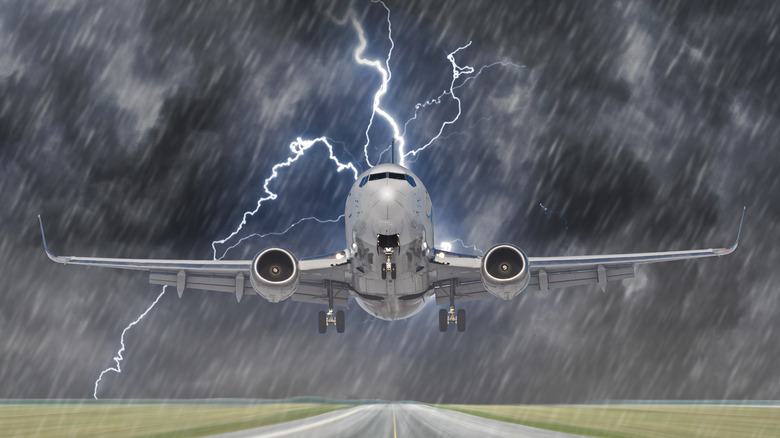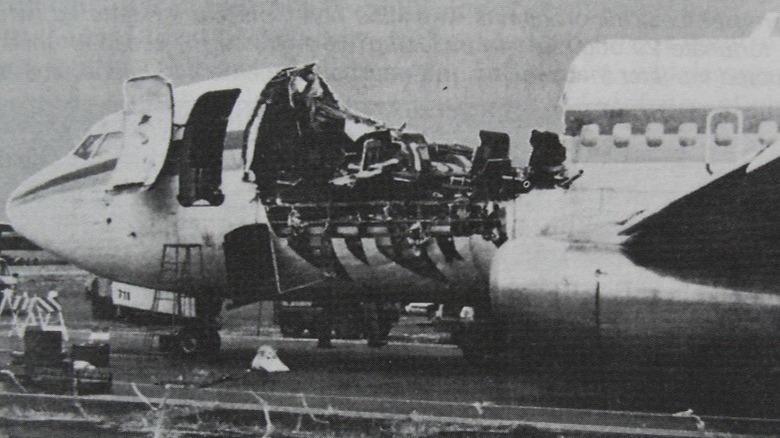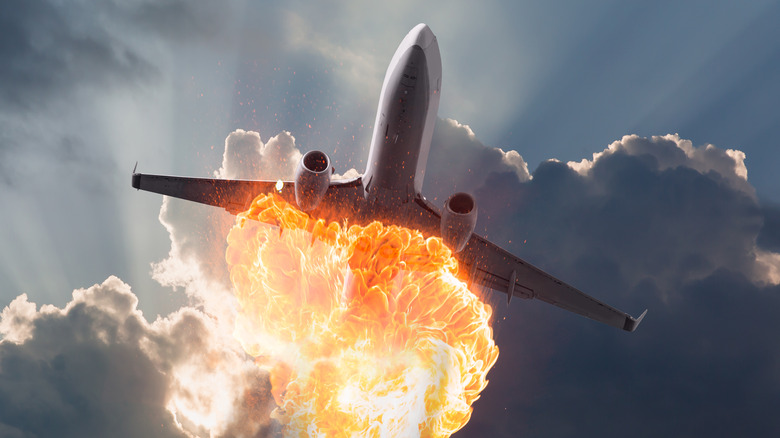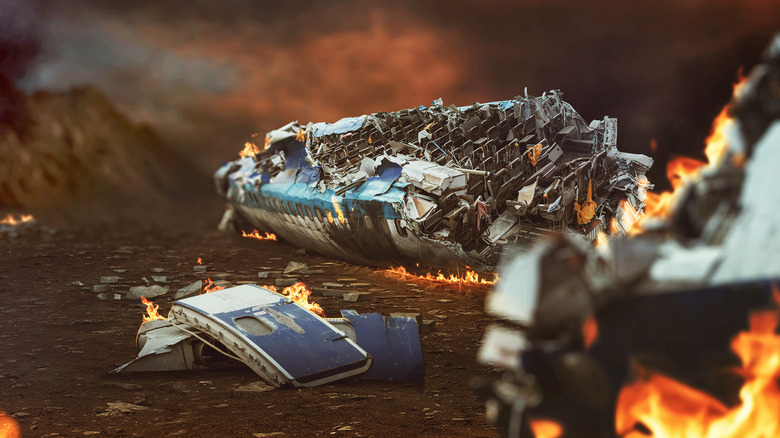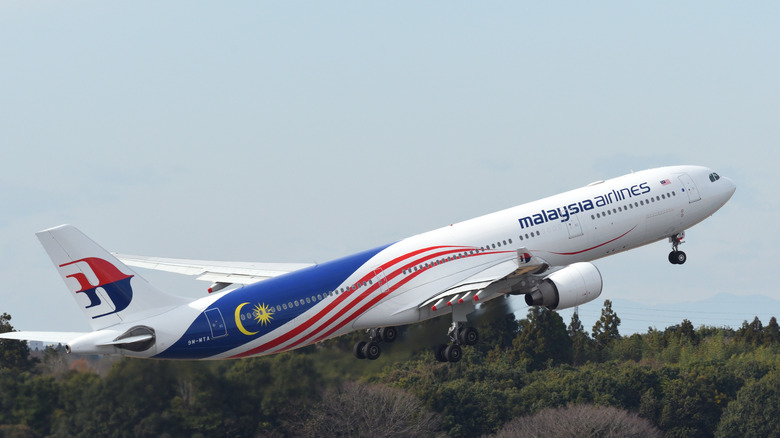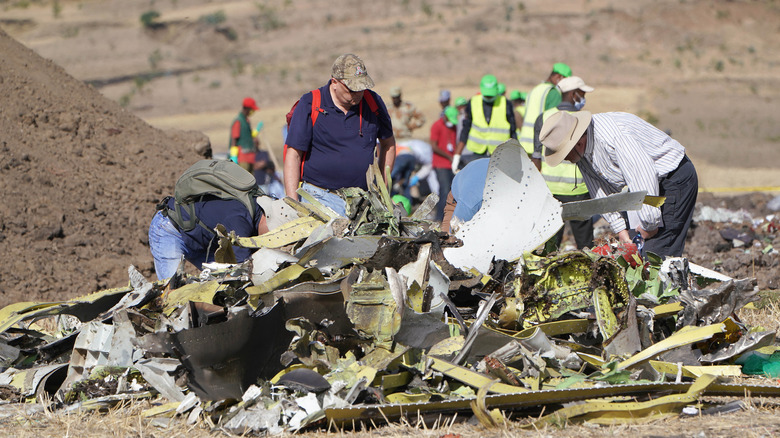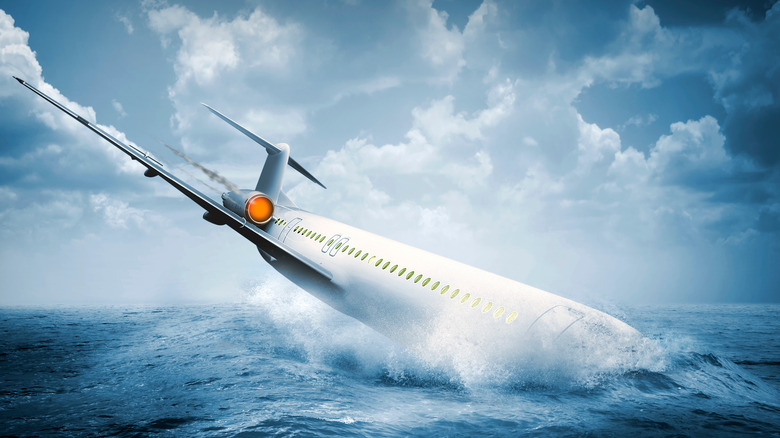Tragedies That Changed Aviation Forever
Aviation is not only the youngest form of transportation but the safest. Unfortunately the road to achieving safety relied on "tombstone" technology -– meaning many mistakes and human lives were lost in the process of development. It is from these proverbial ashes that engineers, safety experts, and policy makers have stepped up and made major changes to prevent horrifying accidents from happening.
It is easy to place the blame on the pilots of airplane accidents, but they often have mere minutes, sometimes only seconds, to spot a problem, analyze the situation, and act accordingly. Sometimes these accidents were bound to happen regardless of the skills the pilot's possess. Corporate incentives to save money can lead to manufacturers taking dangerous short cuts or continuing to use faulty equipment far pass its prime. The following accidents had significant impacts on air travel, in both how members of the aviation community conduct procedures and how airlines must operate their airplanes.
Air France Flight 4590
The Concorde was a game-changer in aviation. It was the world's first and only fleet of supersonic airplanes. According to the Smithsonian Institute, these airplanes could move at twice the speed of sound with their four Rolls-Royce engines and sleek spaceship-like structures.
For roughly 30 years the Concorde maintained a clean safety record — that was until a fateful day on July 24, 2000. Air France Flight 4590 departed from De Gaulle Airport carrying 109 passengers and crew bound for New York City. Not long after takeoff the plane erupted into an inferno and crashed, killing everyone on board plus four people on the ground (via History).
Investigators learned that there were no mechanical or structural failures of the aircraft itself during the accident. Smithsonian reports that a Continental Airlines jet taking off before Flight 4590 had dropped a jagged metal piece, causing the Concorde's tire to blow out and tear off before slamming into the left wing. This in turn caused a fuel leak that ignited, and the pilots ended up smashing into a vacant hotel, killing four bystanders.
This crash put an end to the Concorde. In 2003, British Airways and Air France retired their fleets of Concordes (via the Guardian). In 2010, the mechanic, John Taylor, who worked on the Continental Airlines jet was charged with involuntary manslaughter. Continental Airlines was fined $265,000 and had to pay Air France more than €1 million for ruining their reputation.
TWA Flight 2 and United Airlines Flight 718
People often take communication and today's technological advances for granted. In the early 1950s, radar and other air traffic control procedures were very limited and rudimentary. All that needed to happen to possibly prevent the tragedy on the morning of June 30, 1956, was proper communication.
As Atlas Obscura details, TWA Flight 2 took off from Los Angeles traveling to Kansas City, while United Airlines Flight 718 (also departing Los Angeles) took off a few minutes later bound for Chicago. Ninety minutes after their takeoff, the two airliners collided with each other over the Grand Canyon.
The accident report from the Civil Aeronautics Board states the TWA pilot requested an altitude change from 19,000 feet to 21,000 to avoid clouds. However, United Airlines was flying at 21,000 feet on nearly the same flight path. Both aircraft had navigated around opposite sides of a cloud formation, and neither was aware of the other's position in the airspace. Investigators concluded in the report that the pilot of United 718 must have seen TWA 2 at the last moment, unsuccessfully evaded it, and the left wing of United 718 clipped the tail of TWA 2. Both airplanes lost control and subsequently crashed, killing 128 people. As Atlas Obscura notes, it was considered the deadliest commercial crash in United States history at the time.
This event led to the founding of the Federal Aviation Administration as the governing authority of all things aviation. It also led to developing better air traffic control procedures, such as altitude separation, as per Popular Mechanics.
United Airlines Flight 173
The ability to multitask and prioritize activities is essential for a pilot regardless if they are flying a balloon, a fighter jet, or a fully loaded passenger airline. One of the fundamental things that pilots craft from day one is the concept of Cockpit Resource Management or CRM. Good CRM is practiced when pilots communicate effectively, maintain situational awareness, delegate tasks, and make decisions.
On December 28, 1978, the pilots of United Airlines Flight 173 got too involved with troubleshooting a landing gear issue and ran out of fuel as they were coming in for a landing. According to National Transportation Safety Board (NTSB) investigators, the flight was approaching Portland International Airport and was in a holding pattern when the fuel ran out. A forced landing had to be made. The plane crashed about six miles from the airport.
The NTSB reported that two crew members and eight passengers died, with 21 passengers surviving with serious injuries (the remaining of the 181 were fine). The New York Times reports a German shepard was also rescued alive from the cargo hold. Investigators pointed to the pilot's inattention to the fuel levels during the initial emergency, as well as two flight crew members failing to understand the fuel was a priority and alert the captain.
Because of the accident, the FAA began improving CRM, with United Airlines being the first to publish procedures and implement the practice (via Popular Mechanics). Now all pilots from their first flight lesson are trained to use CRM.
Air Canada Flight 797
It may sound counterintuitive, but there was once a time when smoking on a plane was acceptable. Yet, there were no safety features installed on board that could help mitigate a cabin being swallowed by smoke. But this accident was not caused by an errant cigarette butt.
On the evening of June 3, 1983, plumes of smoke overtook the cabin of Air Canada Flight 797 as it flew from Dallas to Toronto (via NTSB). The fire began in the rear bathroom of the plane and forced pilots to make an emergency landing in Cincinnati. Thankfully the fire department was already in place to attend to the aircraft.
The NTSB reported that within a minute of opening the exits, a flash fire engulfed the cabin. Twenty-three passengers failed to escape the burning plane and died, but the remaining 18 evacuated along with the pilots and flight attendants. Investigators were unable to determine how the initial lavatory fire began. However, they blamed the severity of the accident on the crew not quickly relaying the fire's intensity and severity to the captain.
After, smoke detectors became a requirement for all airlines. They were required to be installed in all bathrooms and areas of the cabin, as per Popular Mechanics.
Delta Air Lines Flight 191
Pilots learn early in their training to respect the forces of nature through meteorology. To laymen, flying through clouds and rainfall seems uncontroversial. It seems like no big deal — people drive through the rain all time. However, people underestimate how those cute, puffy clouds hide so many dangers.
Delta Air Flight 191 was landing at Dallas/Fort Worth airport on August 2, 1985, when it was caught in a thunderstorm. The NTSB reported the plane flew under a rain shaft under the thunderstorm clouds and experienced heavy wind shear. This is called a microburst, and according to the National Weather Service, it contains winds in excess of 150 mph and downdrafts.
When Delta 191 entered the microburst, it caused the plane to rapidly lose altitude and crash a mile short of the runway. Combined with a large fire, the plane disintegrated from impact, killing 134 out of the 163 people on board (via NTSB).
According to NOAA, microbursts were poorly understood at the time, and this accident was one of three between 1975 and 1985. The aftermath led to airlines equipping their fleets with wind-shear sensing equipment (via Popular Mechanics).
Aloha Airlines Flight 243
Rest assured that these days, whenever you squeeze yourself into your assigned seat and buckle up, the plane carrying you to your destination has been checked, double, and triple checked for safety operation ... or at least it is supposed to be. Aloha Airlines Flight 243 should have been just another short, mundane flight back to the big island.
According to Maui News, the captain, Robert "Bob" Schornstheimer, described the accident thusly, "It was like a surreal experience, because I was looking through the doorway and at the bloodied faces of the passengers ... And the top (of the plane) was missing, from the aft of the galley to the forward edge of the wings."
On April 28, 1988, a large section of the fuselage/main cabin was peeled away in flight due to an "explosive decompression," leaving passengers exposed to the elements (via NTSB). Only one person, a flight attendant named Clarabelle "C.B." Lansing, was sucked from the aircraft, as per Maui News. Schornstheimer made an emergency descent from 24,000 feet to an airport in Maui and landed safely (despite missing 18 feet of the cabin walls). Only seven passengers and one crew member were badly injured.
The NTSB report stated that human error related to maintenance and inspection procedures were at fault. There was evidence that the aircraft's structure was damaged due to worn-out components. As a result, the accident placed more strict and thorough inspections of aircraft before and after flight (via Popular Mechanics).
United Airlines Flight 232
Airplanes do not strictly speaking just fall out of the sky. If one or more engines were to suddenly quit, a pilot simply glides it back to the ground for a normal landing. The landing that Capt. Alfred Haynes had to conduct was anything but normal, and investigators had described it as downright impossible.
About an hour into the flight on July 19, 1989, the crew of United Flight 232 heard a loud bang, and the otherwise calm flight from Denver to Chicago abruptly got chaotic. According to Popular Mechanics, the plane shuddered and shook as it began a rapid climbing right turn — the second engine (of three) had failed. The first officer struggled to shut off engine two, then the pilots lost directional control. Haynes took command as the plane began rolling almost to the brink of being upside down. He quickly acted by shutting off the left engine and focusing the power to the remaining right engine. This allowed Haynes to keep the airplane from falling into a spin.
The impact at Sioux City airport killed 111 of the 296 people aboard. The NTSB reported the cause was a malfunction of the engine's fan rotor, which came apart and severed the hydraulic lines (which facilitate directional control surfaces).
The accident led to better engine inspections, higher quality engine components, and required airliners to have more redundancy in its systems.
US Air Flight 427
Outside of Pittsburgh, Pennsylvania, in 1994, emergency crews were called to the scene of a fatal plane crash. The assistant fire chief of Hopewell Township, Ron McMasters, remembers the scene that evening: "All there was a wall of fire ... I will never forget it. I was looking for survivors. But I couldn't figure out why I couldn't see anyone. As I was getting closer, I could see parts of hands and feet," as per the Baltimore Sun.
On September 8, US Air Flight 427 was en route from Chicago to Pittsburgh when it experienced a mechanical issue. NTSB investigators reported the Boeing 737 entered in an "uncontrolled descent" before striking the ground six miles from its final destination. All passengers and crew were killed, totaling 132 deaths. The airplane was destroyed in part by the impact and the ensuing fire. The NTSB concluded a valve malfunction caused the rudder to deflect and become stuck in the opposite position the pilots intended.
The crash caused Boeing to retrofit all its aircraft with new safer rudder components. The National Transportation Safety Board also recommended improving the operation of the 737 rudder system and unusual attitude recovery procedures (via NTSB).
Malaysia Airlines 370
With all the computers, navigation, and GPS capabilities, it is perplexing to imagine that in this modern era of flight that anyone could lose track of an airplane carrying hundreds of people. In 2018 that is what happened with Malaysia Airlines Flight 370.
This accident remains a mystery, but on March 8, 2014, Malaysia Airlines Flight 370 disappeared while en route from Kuala Lumpur to Beijing. The aircraft dropped off the radar because its transponders were turned off. According to the Atlantic, the last known transmission with air traffic control was when the aircraft was about to enter Vietnamese airspace. Britannica reports the Malaysian military tracked Flight 370 by radar as it traveled off its flight path and headed southwest towards the Malay Peninsula. They lost radar contact and began using Inmarsat geostationary satellite for tracking, however, it too lost contact.
Two weeks later, Britannica reports an investigation concluded that the plane crashed into the Indian Ocean some 1,500 miles from Australia. Based on analysis made by Inmarsat and the United Kingdom Air Accidents Investigation Branch (AAIB), it was unlikely that anyone survived. The search continues for answers as the black box was never recovered.
Because of the tragedy, there has been a call to install real-time flight tracking onboard airliners (via Popular Mechanics).
Lion Air 610 and Ethiopian Airlines 302
The Boeing Max 8 was, in part, the result of capitalism and competition being prioritized over safety. In an effort to compete with AirBus' new fleet of fuel-efficient airplanes, Boeing decided to upgrade its planes with a whole new set of engines. According to Verge, this translated to cutting corners, including not providing adequate training for pilots on the new flight systems.
On October 29, 2018, Indonesian Lion Air Flight 610, a Boeing 737 MAX 8, crashed into the Java Sea 13 minutes after it took off, killing 189 people. Ethiopian Airlines Flight 302 (also a MAX 8) crashed five months later a mere six minutes after takeoff, killing 157 people, as per the Washington Post.
Both suffered from a flight computer issue that would push the aircraft's nose down. Business Insider reports the Maneuvering Characteristics Augmentation System (MCAS) was designed to allow the controls to behave like the previous version of the Boeing 737. The system would kick in whenever it detected abnormalities from a single sensor measuring the "angle of attack." In a nutshell, it caused pilots in both crashes to fight with the automated controls in order to raise the nose.
As a result, all MAX 8 aircraft have been grounded, and they are working on the software issue and retraining pilots. The Federal Aviation Administration has been criticized for its lack of oversight regarding aircraft manufacturers policing their own safety measures. Software on airplanes need to collect data from more than a single sensor or source.
Air France 447
Severe weather is a red flag pilots actively make plans to avoid. In fact, Federal Regulations Part 91.103 states "Each pilot in command shall, before beginning a flight, become familiar with all available information concerning that flight ... including weather reports and forecasts." Today many aircraft -– regardless if they are general aviation or commercial — are equipped with sensors and computers that receive real-time data on storm systems.
As Popular Mechanics details, on June 1, 2009, Air France Flight 447, an Airbus A330-200, headed into an area of severe thunderstorm activity on its flight from Rio de Janeiro, Brazil, to Paris. Other air carriers flying through the region had diverted their flight around the storm system over the Atlantic. About two hours into the flight, the pilots observed a "strange electrical phenomenon" in the cockpit.
Experts point to three critical events that caused the crash: the pilot's failure to interpret faulty airspeed indicators, a lack of CRM, and the fact that the airplane's pitot sensors failed due to the severe storm, as per the BBC. The pilots accidentally misinterpreted their airspeed as being too fast and pitched the nose upward, causing an aerodynamic stall. They failed to recover from the stall in time, resulting in the deaths of 228 people on board (via Popular Mechanics).
According to Popular Mechanics, experts concluded that pilots should not be over-reliant on automated systems and emphasized a need for more manual flight training.
